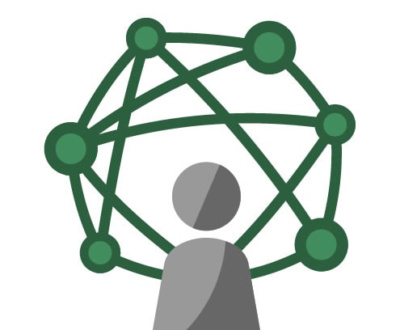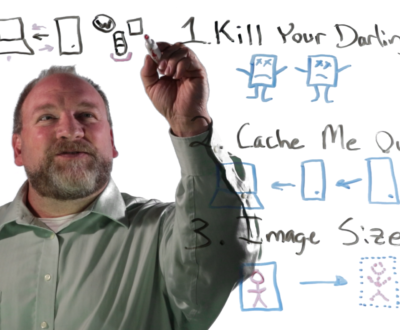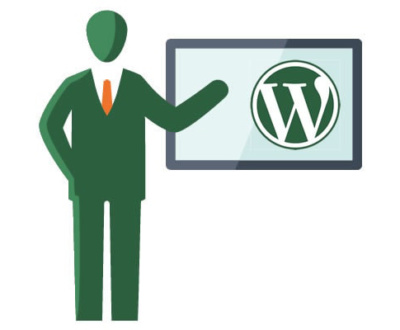4 Reasons We Switched to WordPress Websites (You Should Too)
- September 30, 2015
- Lists, Website Design
In the 14 years our Fort Collins web design team have been building and hosting websites, nothing has come up more than the client’s desire to log in and edit the website content without having to hire someone each and every time something needed to be updated.
In 2002, custom-made Content Management Systems (CMS) were legion. Every developer had his or her own way to let their clients manage some or all of their content behind an authentication wall.
The problem for developers was that the web continued to evolve, and clients wanted newer and better ways to present their content, and even more intuitive ways to create the content in the first place. This invariably led developers back to the drawing board to tease more and more functionality out of their CMS designs. The relative success or failure of these endeavors were mostly connected to the complexity of ongoing enhancements. It’s one thing for a 3 or 4 person team to tweak and refine their existing software. It’s quite another to have full-blown development and testing cycles year in and year out.
Alternatives began to emerge pretty seriously in the mid-aughts, with open-source solutions like WordPress and Joomla leading the charge. Comparing these two leading open-source CMS’s can be a long-winded (if entertaining) discussion, and they both have many good things for website builders and do-it-yourself-ers.
For our part, we abandoned our own CMS in favor of Joomla in 2009. Where WordPress has an established user base, it had much “baggage” from it’s blogging platform origins that seemed to get in the way, in the early days. Joomla was built for website builders first. It had blogging capabilities, but many developers flocked to this open-source system as a “fresh-start” at CMS design and deployment.
WordPress was very much aware of these developments, and had always been moving more “toward the center” in terms of being a blogging engine, versus a true website building system. By 2013, these two systems and many more had really started to mature as powerful systems.
At Colorado Web Design, we have finally moved all of our Joomla clients into WordPress websites, and there are 4 essential reasons why we made this move:
1. The Plugins!
Holy smokes there are a lot of third-party developers out there! While this is true of all the CMS ecosystems, WordPress, with the largest user-base, largest number of third party developers, and largest raw count of potential enhancement plugins, ends up being an obvious choice.
From the templates that dictate the look and feel of the website, to any number of enhancing functionalities like shopping carts, events calendars, contact forms, video feeds, etc, WordPress has more choices, more resources, and often more competitive prices to build up the advanced functions clients want in their websites.
2. Easy to Teach to Clients
This is an oft-overlooked component in the web design game. Yes you can build websites with lots of systems. Yes Joomla or Drupal can be taught to clients. But after many years of training sessions with different systems, we can cleanly report that WordPress wins hands-down in terms of intuitive use, logical compartments of systems like pages, posts, and menus, and overall speed to ramp up our clients.
Ultimately, despite Joomla and Drupal having their own distinct advantages in certain complex platform setups (like intra-office hub websites), the division of tasks and location of items to create and maintain the content on these sites has a steeper learning curve than WordPress does.
When we look at the time we’ve had to spend “re-training” clients on their CMS, the need to do something different was clear. Our switch to WordPress nearly evaporated the need for this re-training business function altogether!
3. The Support Community
Sometimes you will have technical issues and you will need help. That’s even true for development companies like ours. By policing the developers of plugins and templates, and making quality of support a transparent part of the marketing of any officially sanctioned third party products, WordPress has cultivated an environment where developers must expect to support their own plugins and templates, or risk having these support failures highly visible right where new users are clicking to purchase.
Even in cases where a developer cannot assist, WordPress more than the other CMS platforms has a passionate community of developers and other WordPress experts ready to assist with anything from mundane reminders of the basics, to complex code discussions and marvelous customizations, shared with the world for free use.
4. The Elegant Code Base
Having worked with developers for years, you get a sense of how folks feel about the code behind the scenes. When comparing CMS platforms, this can be especially true given the very public nature with which the code itself has been developed, and the highly enthusiastic supporters of developers from within each of the camps.
But getting beyond the tribal hype, the developers behind the WordPress core have over a decade of experience with this code base at this point, and have made major inroads into it’s long-term cleanup and health. Elegance can mean many things, and in this case, it does mean many things! The functions and sub-routines of the system are intuitively described, the machinations of The Loop are extremely efficient with no further tweaks, and wherever possible, the system tries to have a light touch with database interactions and unnecessary file loading.
Any CMS will have a bit of unneeded code to accommodate the many potential needs of users, even if any one user doesn’t need all the hooks and files loading and ready for use.
But WordPress seems to strip these page load activities down to the bare essentials as much as possible, leaving less for the browser to load for site visitors, and a faster overall experience.
Summary
I’m sure there will be strong disagreement on some of my points above. Each community has its passionate advocates, and any one user can pull up anecdotes to support their position. Heck, that’s all I’m doing right now! But after many years in this web development game, WordPress does everything we need, every time, and it has made our building and maintenance process much more streamlined.
We made the switch and we’re not looking back.
Bill lives and plays in Fort Collins, Colorado. After a fulfilling career for a Fortune 50 company, Bill founded Colorado Web Design in 2012 with a passion for creative digital solutions for business. Bill likes to manage a wide variety of projects and tasks for his clients in the digital space. The creative elements of website design, application design, and marketing are enough to keep anyone busy and engaged, but wiping the slate clean over and over at the start of new projects comes with its own challenges. "I like to start with really good client communication sessions. The rest is easy if you get started in the right way." He plays tennis, bikes, and hikes and then undoes all of that with too much delicious food and TV watching.
About Colorado Web Design
We've been building websites for Colorado businesses since 2002. We are a small team of dedicated individuals who love the challenge of each new marketing project. We live and play in northern Colorado.












